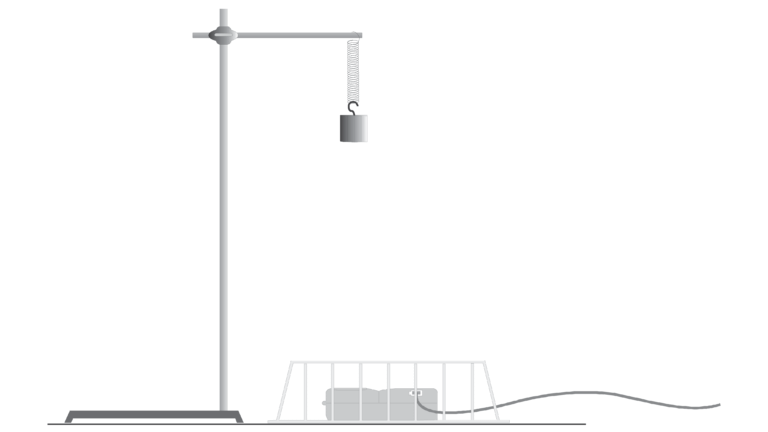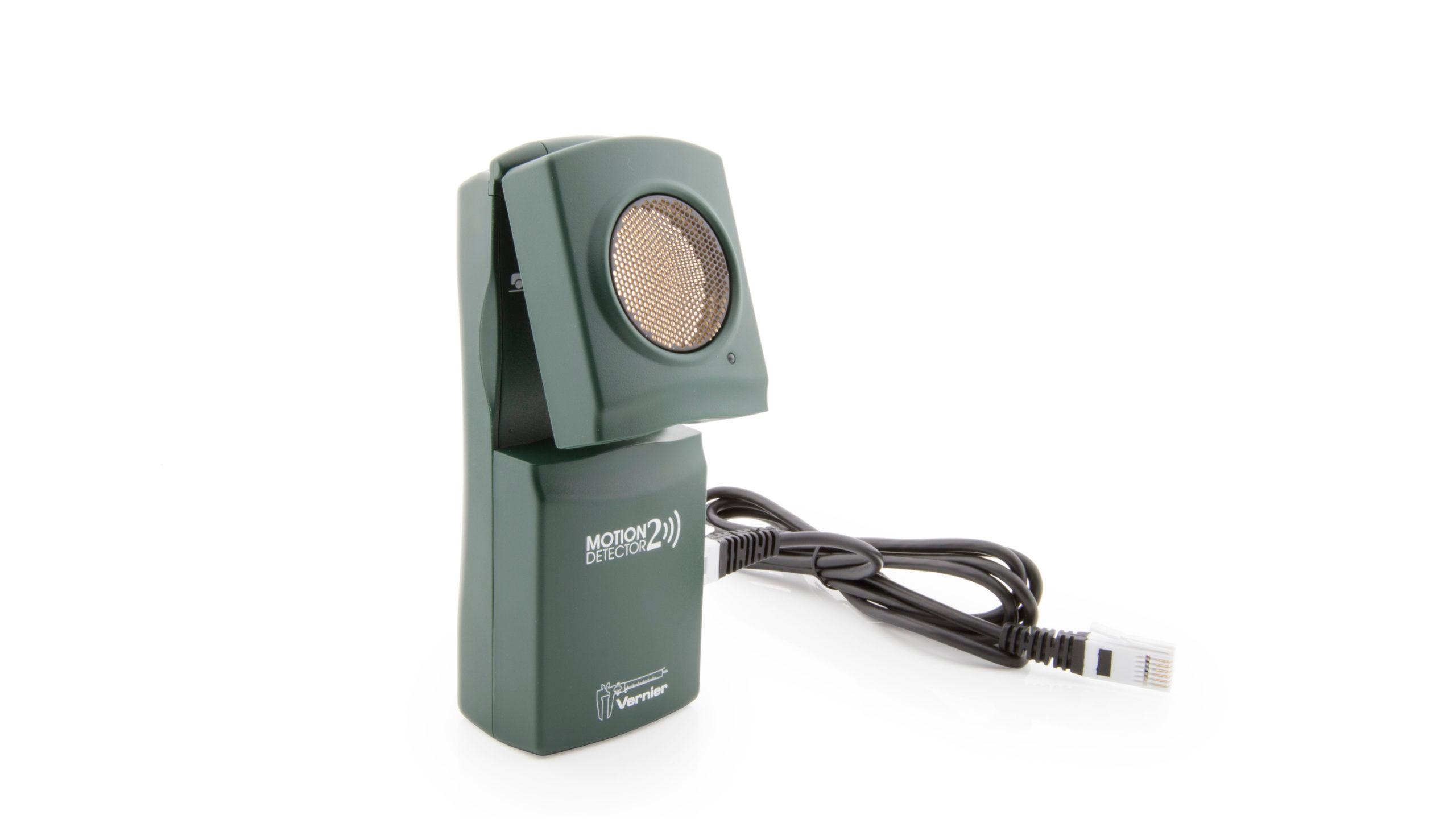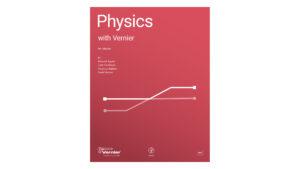
Introduction
We can describe an oscillating mass in terms of its position, velocity, and acceleration as a function of time. We can also describe the system from an energy perspective. In this experiment, you will measure the position and velocity as a function of time for an oscillating mass and spring system, and from those data, plot the kinetic and potential energies of the system.
Energy is present in three forms for the mass and spring system. The mass, m, with velocity, v, can have kinetic energy KE
The spring can hold elastic potential energy, or PEelastic. We calculate PEelastic by using
where k is the spring constant and y is the extension or compression of the spring measured from the equilibrium position.
The mass and spring system also has gravitational potential energy (PEgravitational = mgy), but we do not have to include the gravitational potential energy term if we measure the spring length from the hanging equilibrium position. We can then concentrate on the exchange of energy between kinetic energy and elastic potential energy.
If there are no other forces experienced by the system, then the principle of conservation of energy tells us that the sum ΔKE + ΔPEelastic = 0, which we can test experimentally.
Objectives
- Examine the energies involved in simple harmonic motion.
- Test the principle of conservation of energy.
Sensors and Equipment
This experiment features the following sensors and equipment. Additional equipment may be required.
Correlations
Teaching to an educational standard? This experiment supports the standards below.
- International Baccalaureate (IB) 2025/Physics
- The students should understand a qualitative approach to energy changes during one cycle of an oscillation.
Ready to Experiment?
Ask an Expert
Get answers to your questions about how to teach this experiment with our support team.
- Call toll-free: 888-837-6437
- Chat with Us
- Email support@vernier.com
Purchase the Lab Book
This experiment is #17 of Physics with Vernier. The experiment in the book includes student instructions as well as instructor information for set up, helpful hints, and sample graphs and data.






